Country houses for sale in the Cotswolds
Will the region be revitalised by two of the biggest estate sales of the year?
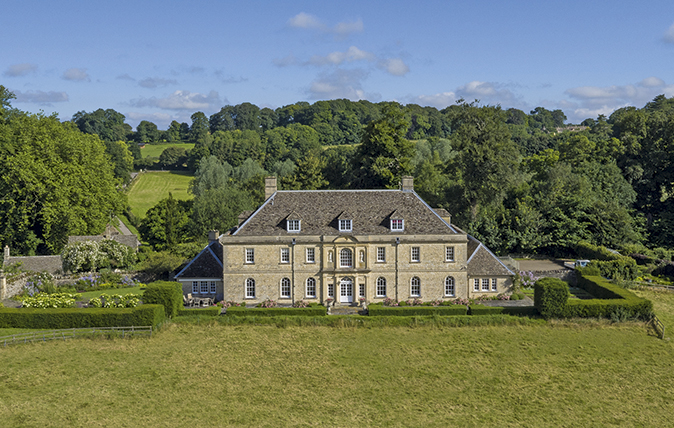
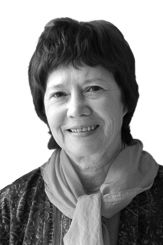
With no major political events blighting the landscape for the first time in three years, this is as good a time as any to launch the biggest estate sales of the year in the Cotswolds, says Clive Hopkins of Knight Frank, who is testing the water with not one, but two of the region’s most prestigious country estates in this week’s COUNTRY LIFE.
The first of these is the historic, 762-acre Bibury Court estate on the banks of the River Coln at Bibury, seven miles from Cirencester, Gloucestershire, which boasts a house by Quinlan Terry and a no-nonsense price tag of ‘excess £17.5 million’ through Knight Frank (020–7629 8171) and local agents Moore Allen & Innocent (01285 648105).
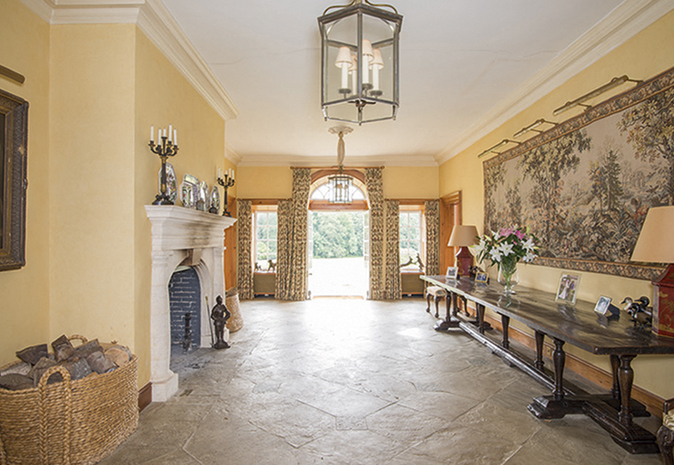
Hot on its heels comes the picturesque, 605-acre Old Chalford estate, two miles from Chipping Norton, Oxfordshire, for which Knight Frank quote a guide price of £9m; this notable mixed sporting estate with a substantial Cotswold-stone main house is being offered as a whole or in two lots.
The ancient manor of Bibury dates from at least the early 8th century, when the bishopric of Worcester had an estate of 15 ‘cassati’ by the River Coln, five of which were leased to Earl Leppa and his daughter Beage between 718 and 745. Thereafter, the village became known as Beage’s Bigbury (a ‘bury’ being a fortified place) and, later, Bibury. After the dissolution of the Monasteries, the manor was acquired by John Dudley, Earl of Warwick and sold to the Crown in 1551. In 1554, the estate was bought by Hugh Westwood of Chedworth, who died in 1559, leaving Bibury to his nephew, Robert, who died in the not- orious Fleet debtors’ prison a year later. In about 1625, his son, William, sold the manor to Sir Thomas Sackville, the illegitimate son of the 1st Earl of Dorset, who was ‘knight and gentleman-usher in dailie waiting on the King’ (James I).
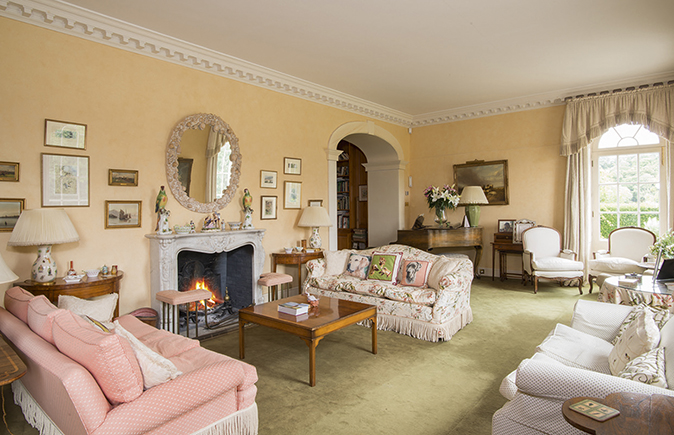
At this point, the main house on the estate was a Jacobean mansion built between 1560 and 1599 on the site of a former Benedictine monas- tery, which was incorporated into Bibury Court, a grand new country house built by the Welsh wizard Inigo Jones for Sackville in 1633. The estate remained in the Sackville family for several generations before passing by marriage to the Creswells, who, owing to a disputed will and years of litigation, eventually sold it to Lord Sherborne in 1816.
In the 1920s, Bibury Court was bought and refurbished by Sir Humphrey Orme Clark, whose widow lived there until her death in the early 1960s, after which it became a hotel, before reverting once again to private ownership. Lord Sherborne retained the bulk of the manor farmland, which was eventually sold in the 1940s to a farming company, S. J. Phillips & Sons (Kemble) Ltd.
Most of the stone buildings in what is now Bibury’s jealously guarded Conservation Area were built in the 17th and 18th centuries, when agriculture was the source of its prosperity. The 19th century, however, saw a general decline in farming and Bibury, along with the rest of the Cotswold villages, fell upon hard times, until the Arts- and-Crafts movement, the availability of mass transport and the backing of Country Life revived its fortunes in the early 20th century. For William Morris, Bibury was, quite simply, ‘the most beautiful village in England’.
Exquisite houses, the beauty of Nature, and how to get the most from your life, straight to your inbox.
Today’s Bibury Court estate is entered off the quiet Bibury to Coln St Aldwyns lane via a long carriage drive that sweeps past Bibury Court, now listed Grade I, and up a hill to a discreet gravelled parking area to the north of Court Farm, the classic Cotswold stone house designed by Quinlan and Francis Terry for the current owners in 1986.
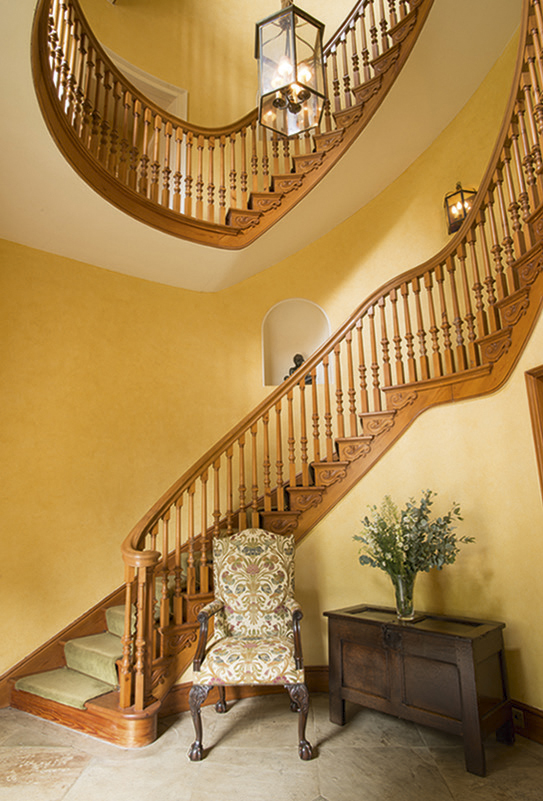
Described in the Bibury Conservation Area Statement as ‘a recent building requiring special mention’ and ‘a competent essay in classical country house design, confidently imposing its stature on the south-eastern end of the village’, Court Farm has long, low elevations of five wide bays on the main front and seven narrower ones to the rear. Possibly its sole extravagance is the strong, ornate central bay, from which a wide flagstone-floored entrance hall looks straight through the house onto the glorious Coln valley below.
The house is roomy but manageable, with 11,300sq ft of living space, including four main reception rooms, a study, a billiard room, a kitchen/breakfast room, six bedrooms and six bathrooms. Further accommodation is available in the pretty, Grade II-listed, four-bedroom Mill House, which dates from the mid to late 17th century and stands alongside a Grade II-listed, 18th-century dovecote, with a courtyard of garages, stabling and further storage beyond.
The crystal-clear waters of the River Coln, which wind through the estate and offer 1.4 miles fishing in a stream teeming with trout and wildlife, are hopefully a portent of less confusing times ahead.
Meanwhile, the estate’s 100 acres of well-managed woodland and striking topography will continue to provide everything required for a challenging and enjoyable pheasant and partridge shoot in the months ahead.
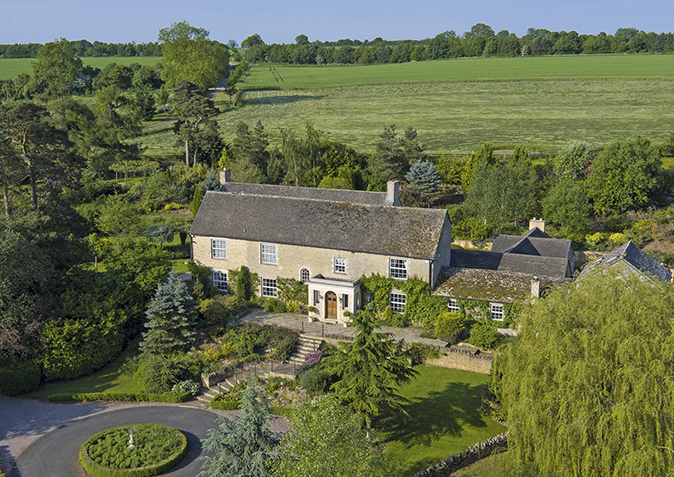
Once part of the Heythrop Park estate, Old Chalford is a wonderfully scenic estate set in rolling Oxfordshire countryside between Woodstock and Chipping Norton, surrounded by its own enchanted valley. At its heart stands Old Chalford House, a traditional Cotswold stone farmhouse with some 20 acres of gardens and a lake.
The house was renovated and extended by its present owners in 2000 and now offers 8,730sq ft of family accommodation, including four reception rooms, a kitchen/breakfast room and six bedroom suites. Extensive secondary accommodation includes a one-bedroom staff flat, a party barn with two guest bedrooms and a one-bedroom guest flat.
The River Glyme, which traverses Old Chalford’s 585 acres of farmland, currently farmed in hand with two full-time employees, attracts an abundance of wildlife the length of its meandering stream, large lakes and beautiful mixed woodland.
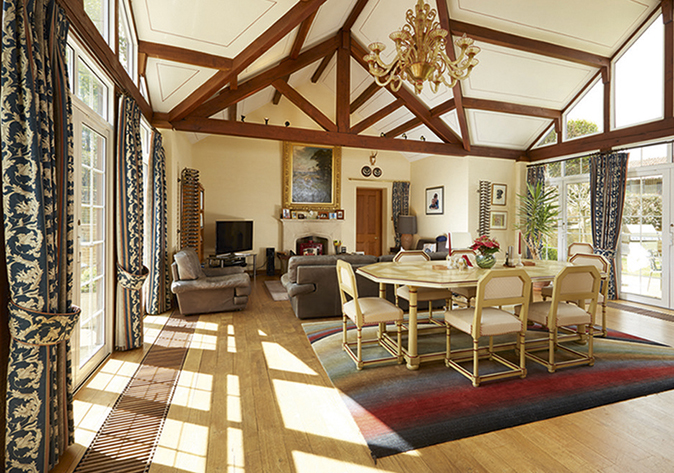
The river valley is a precious amenity that has, in the past, sup- ported an excellent family shoot in conjunction with 63 acres of woodland laid out to take advantage of the valley’s topography.
The land also includes some 55 acres of stockproof grazing plus some larger blocks of arable land totalling approximately 468 acres.
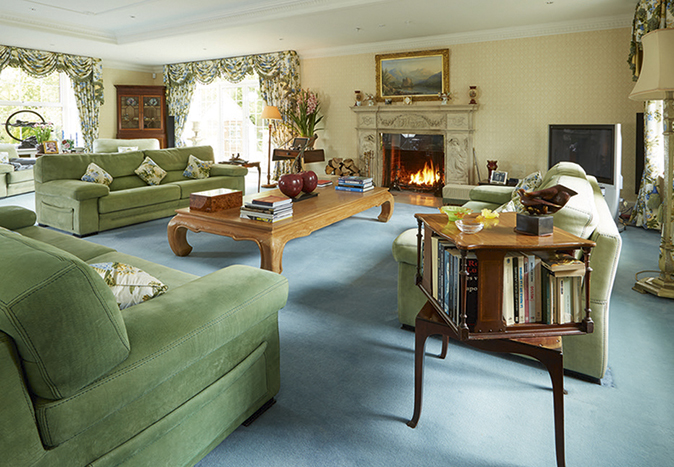
Further income potential has been created by the conversion of a former barn to a smart, two-bedroom cottage with permission for use as a holiday let. A further unconverted barn also has permission for holiday use.
An extensive range of modern farm buildings includes a workshop, a tractor-storage barn, a grain store and three livestock buildings.

